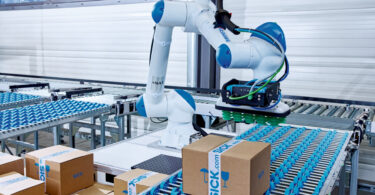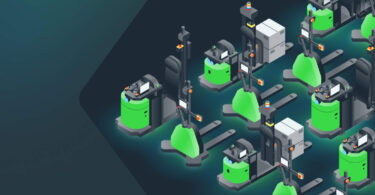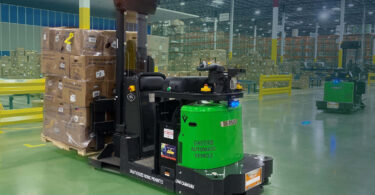A quick Q&A from autonomous vehicle expert Noah Winchester
With extensive experience in robotics, LiDAR systems, factory automation, digital transformation, safety systems, sensors, and high precision optical measurement and visualization, Noah Winchester knows a thing or two about the value of good interoperability in today’s warehousing environment.
In this Q&A, Winchester tells why interoperability is so important in this business setting and tells how it applies to the use of safe, flexible, mobile platforms enabled by intelligent sensors.
Q: Define interoperability and tell how it applies to the use of safe, flexible mobile platforms enabled by intelligent sensors.
A: Interoperability is the ability of different platforms to communicate the direction that they're traveling, the vector, or how they're moving and where they're going in real time. There's a challenge that exists in the deployment of AMRs today, and particularly when companies use multiple platforms.
For example, in a manufacturing setting, you may have autonomous lift trucks moving inventory from one location to another. Or, there might be a tug moving from one workstation to the next. The end result is a number of different OEMs, all with various autonomous platforms, doing specific tasks within a production facility.
Q: Why is interoperability so important in the warehouse/DC setting?
A: These scenarios create challenges when the different platforms and the software used to control the heuristics, or that decision making process when a robot says, “I can't go forward anymore, there's something blocking my path. I need to go around it.” When there are multiple platforms making those decisions, and with none of those platforms talking to one another, it creates risk like the potential for collisions or other problems.
Understanding this, some OEMs are beginning to look harder at interoperability and are working to ensure that their products “talk” to other products that they may not have developed. This is important because the more automation is put into the warehouse or logistics environment, there could be a higher probability of increased problems with maintaining or increasing productivity.
Q: What role do sensors play in interoperability?
A: The ANSI/RIA R15.08-1-2020 (Part I) standards specify safety requirements for industrial mobile robots (IMRs) and define how safety is addressed within those individual mobile platforms, including lift trucks, tugs and other equipment.
Part II of these standards is currently being worked on and will define the issues around interoperability and how they need to be addressed. Within this context, there are different ways that you can reduce risk and increase productivity, even if some of these platforms aren't directly talking to each other.
With a real-time localization system enabled by smart sensors, for instance, all robots and platforms would have identification tags that indicate the direction that they're moving in real time. This would effectively prevent collisions by sending a signal to each of the different software packages saying, “Hey, you're coming up on a group of people or a piece of equipment is moving toward you.”
The robot would then slow down and let the person or vehicle pass. The same technology can be applied at a platform level, where five different tugs are controlled by a software package, with sensors put in place for safety purposes and collision avoidance.
Q: What challenges do companies typically encounter and how can these issues be addressed/solved?
A: As more companies adopt automation, the mobile platforms they invest in today may not be the ones that they need in the future. And as they continue to add new equipment and applications, companies wind up with solutions made by many different OEMs, each of which uses a different software platform to control them.
There is not a one-size-fits-all solution available on the market. Interoperability provides some relief in these situations, with groups like MassRobotics prompting manufacturers to open up their ecosystems and allow their software packages to communicate with other platforms. In some other examples, Siemens has fleet management software that doesn't care what kind of robot a company uses; its software package can control any or all of them.
And, Amazon Web Services (AWS) recently introduced its own robot-agnostic fleet management software package. These are some of the ways that companies will be able to settle their interoperability and scaling issues.
Q: Going forward, what role will interoperability play in the warehouses of tomorrow?
A: It will continue to be an effective risk reduction tool for warehouses that are adopting more automated equipment and software. Anytime you inject automation into a facility where people are working and walking around, you create a highly dynamic environment. Federal regulations require you to take actions to limit the risk to those individuals. As such, a main concern has to be reducing risk while keeping production as high as possible. The only way to do that is through interoperability.
Want to learn more about interoperability and mobile robots?




